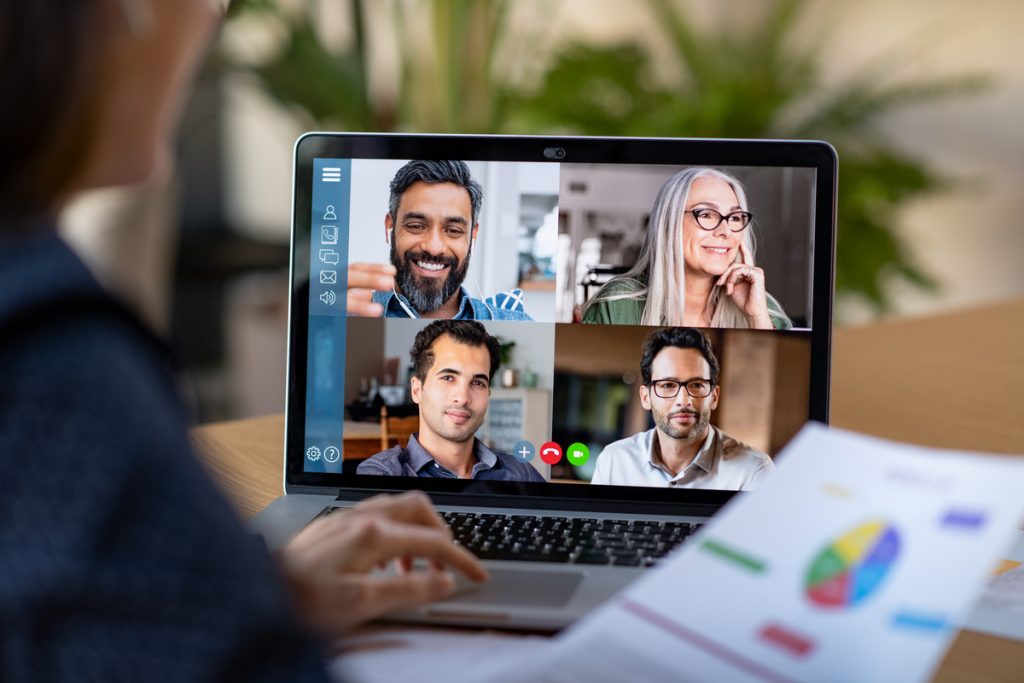
The use of digital conference tools has skyrocketed as co-workers, friends, fitness instructors and families are trying to create a sense of normalcy amid the ongoing COVID-19 global health crisis. Media have also become dependent on these platforms to conduct interviews via video, instead of in-person and in-studio. While this may seem intimidating, video interviews offer the opportunity to create or strengthen a relationship with the reporter, as you are essentially inviting them into your home which is inherently more intimate.
A media friendly of 10Fold shared that they were recently on video with a CEO who showed off her office space and art, which left a lasting impression on that reporter. That said, it is still important to be professional and prepared. Below are some best practices to keep in mind when preparing for a media interview on Zoom, or any other video conferencing platform.
Memorize the 1-2 key messages you want to convey during this briefing. This first tip is, of course, important for any media interview but is even more crucial when you’re on video, as it’s a lot harder to reference notes while on camera. You’ll come across far more confident, engaged and eloquent if you memorize your key messages prior to the call.
Prior to the video interview, confirm where they want you to look. Most times, it will be directly at the camera as this is the video equivalent of maintaining eye contact. Since you are likely orchestrating the interview from your work laptop, it can be easy to check email or slack pop-ups, or glance at your phone. Remember to give the reporter your full attention as if you were sitting in front of them.
Responses should be about 30 seconds for online segments. It’s very important to know what platform your video interview is for, and your PR team will secure those details in advance. If the video interview is going to be shared online, longer responses (up to about 30 seconds) are acceptable. Be careful to avoid responses longer than 30 seconds, as you can end up rambling, diluting your key message or saying something you don’t want to.
Responses should be no longer than 10 seconds for broadcast segments. Broadcast news segments often include the reporter discussing the topic and then just a few brief clips of the spokesperson (which more and more are being sourced from video interviews). In broadcast situations, responses should be kept to 7-10 seconds. In any scenario, when nailing down top messages, sounds bites should be taken into consideration. Trim down responses as short as possible, while providing a thorough and thoughtful response.
Treat the interview as a conversation. Phrase responses naturally and avoid confusing acronyms or too much jargon. The spokesperson should practice with the PR team prior to any video interview to ensure they are executing correctly on tone and style.
Think about appearance and distractions. As everyone is home, including children and pets, make certain that there is a quiet place to conduct the interview free of interruptions or background noise. Also, take into consideration distractions that you may cause. The safest color to wear for video interviews tends to be blue, while white, black, red, stripes and other intricately designed clothes can be distracting due to the way they appear on screen. Background can also deflect attention off the conversation. It is best to a position yourself in front of professional looking décor (think bookshelves, houseplants, etc.) or a plain, solid backdrop. Furthermore, swivel chairs can create a distraction to viewers if the interviewee is moving and fidgeting.
Test out the video conference platform. Ahead of the interview, get familiar with the selected platform and set up an account if needed. Ensure both the camera and microphone are working properly. Run a practice video call with your PR team or another colleague to ensure your internet speed is adequate to support the video call without delays or glitches, as having too many users on the network can cause poor connection. Remember, if you have a partner or child using Zoom for work or e-learning, or someone in the house that is gaming, that can disrupt internet bandwidth. It may be wise to dial into the briefing from your phone instead of using the computer audio, as it is not always clear. Lastly, when the time comes to join the meeting, log in a few minutes early as complications could arise.
While these tips relate specifically to video interviews, many of them apply to traditional phone briefings also, as it is important to be prepared ahead of a conversation with media. For specific tips on how to prepare your CEO for a business press interview, check out our previous blog post.
Don’t forget to subscribe to our newsletter to get our content and other updates straight to your email!